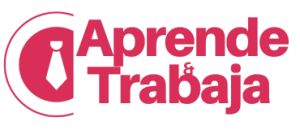2025 Budget: Recession-Ready Checklist to Safeguard Your Finances
Prepare your 2025 budget for uncertainty with this recession-ready checklist designed to protect your savings, and keep your finances strong.
Build financial resilience before the storm hits.
As economic uncertainty looms, many households are rethinking their 2025 budgets to brace for possible downturns. Building a recession-ready financial plan isn’t about panic—it’s about preparation. A clear, structured budget helps you weather financial shocks, reduce stress, and maintain stability even when the economy slows.
This guide breaks down a practical checklist to strengthen your finances, prioritize essentials, and create safety nets that give you peace of mind. By the end, you’ll know exactly how to recession-proof your 2025 budget.

1. Start with a Reality Check
Before you can prepare, you need a clear picture of your current financial situation. Gather your latest bank statements, credit card bills, and income records. Then, categorize your spending over the past three months to see where your money truly goes.
This step often reveals hidden leaks—subscriptions you forgot about or impulse buys that add up. The goal isn’t to feel guilty, but to get honest data. Awareness is your first line of defense in uncertain times.
2. Prioritize Needs Over Wants
In a recession, financial discipline matters more than ever. Separate your “needs” from your “wants.” Essentials like housing, food, transportation, and healthcare come first. Luxuries, entertainment, and non-urgent purchases should take a back seat until your finances feel secure again.
Try the 50/30/20 rule as a flexible guide: 50% of your income for necessities, 30% for discretionary spending, and 20% for savings or debt repayment. If the economy slows, adjust to 60/20/20—cutting wants to strengthen your cushion.
3. Build or Boost Your Emergency Fund
One of the best protections against economic instability is an emergency fund. Aim for three to six months’ worth of essential expenses. If that sounds overwhelming, start small—saving even one month’s worth makes a big difference.
Set up automatic transfers to a separate savings account each payday. Treat this fund as untouchable unless a true emergency arises, such as job loss, major repairs, or medical costs. It’s your personal safety net when the unexpected hits.
4. Reduce Debt Strategically
Debt becomes riskier during a recession, especially high-interest balances. Focus on paying down credit cards and personal loans first, since they drain cash flow with interest charges.
If you carry multiple debts, consider the avalanche method (tackle the highest interest rate first) or the snowball method (clear the smallest debt to build momentum). Either strategy strengthens your position before financial stress increases.
Also, avoid taking on new loans unless absolutely necessary. Protecting your credit utilization ratio can help you maintain a strong credit score even during economic slowdowns.
5. Reassess Income Stability
A recession can affect job markets, side hustles, and business revenue. Review your income sources honestly. If your primary job feels uncertain, consider diversifying with freelance work, online projects, or part-time opportunities that add extra cash flow.
Develop skills that make you adaptable in shifting industries. Even a few hours per week on new certifications or training can improve your long-term security. Preparation beats reaction every time.
6. Cut Recurring Costs and Negotiate Bills
Trimming recurring expenses can instantly strengthen your budget. Review subscriptions, memberships, and services—cancel what you don’t use, and downgrade what you don’t need.
You can also contact service providers to negotiate lower rates on internet, insurance, or phone plans. Many companies offer loyalty discounts if you simply ask. Small cuts across multiple bills can save hundreds annually without major sacrifices.
7. Protect Your Investments
Market volatility is common during recessions, but panicking rarely pays off. Instead of selling in fear, rebalance your portfolio to align with your risk tolerance and long-term goals.
Diversify across asset classes—stocks, bonds, and cash equivalents—to reduce exposure. If retirement is far away, stay the course and keep contributing. For short-term goals, move funds into safer, more liquid accounts. Calm, informed adjustments help preserve growth potential.
8. Review Insurance and Safety Nets
In tough times, insurance coverage matters more than ever. Check that your health, home, and life insurance are up to date and appropriate for your needs. Unexpected events without proper coverage can cause lasting financial damage.
Also, confirm that your emergency contacts, beneficiaries, and documents are organized. A recession-ready household isn’t just about money—it’s about preparation.
Final Thought:
Your 2025 budget can be your greatest shield against uncertainty. By following this recession-ready checklist, you take control of your money instead of letting external forces dictate your peace of mind. Preparation today builds freedom tomorrow.





